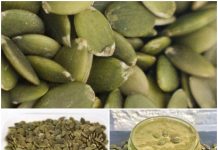In the treasure trove of traditional remedies, few concoctions hold as much promise as fermented garlic immersed in golden honey. This ancient elixir, cherished for centuries for its health-enhancing virtues, combines the potent immune-boosting properties of garlic with the soothing antibacterial qualities of honey. Crafting this elixir at home not only offers a natural approach to wellness but also celebrates the timeless wisdom that food can indeed be medicine. Join me on a journey through the aromatic allure and healthful benefits of this unique potion as we delve into the art of preparation and the essence of safety.
Exploring the Vital Components:
Garlic, the Mighty Bulb:
At the heart of this elixir lies the humble garlic bulb, celebrated for millennia for its potent medicinal properties. Rich in allicin and other sulfur compounds, garlic serves as a natural antibiotic, bolstering the body’s defenses against pathogens and supporting overall immune function.
Golden Honey, Nature’s Nectar:
Complementing the pungent bite of garlic is the golden sweetness of raw, organic honey. Beyond its delectable flavor, honey boasts antimicrobial properties that aid in preservation while imparting a luscious texture to the elixir. As a natural source of antioxidants and soothing agents, honey elevates the blend to new heights of nourishment and palatability.
Crafting the Elixir: A Labor of Love
Step 1: Garlic Preparation:
Begin by peeling a generous quantity of fresh garlic cloves, ensuring they are pristine and free from blemishes. The efficacy of the elixir hinges upon the quality and freshness of the garlic, so select each clove with care, embracing the inherent vitality of this aromatic herb.
Step 2: Honey Submersion:
In a clean, sterile jar, layer the peeled garlic cloves, creating a bed of potent bulbs awaiting transformation. Then, pour the golden honey over the cloves, ensuring they are completely submerged in the sweet nectar. Allow ample space within the jar for the garlic to expand during fermentation, fostering an environment ripe for alchemical synergy.
Step 3: Fermentation Sanctuary:
Seal the jar tightly with its lid and place it in a secluded corner of your pantry or cupboard, shielded from the harsh glare of sunlight. Here, amidst the gentle darkness and steady ambient warmth, the magic of fermentation unfolds over the course of several weeks. Exercise patience as the garlic cloves gradually release their essence, infusing the honey with their savory bouquet.
Ensuring Safety: A Vital Imperative
While the allure of this elixir is undeniable, it is paramount to prioritize safety throughout the fermentation process. To mitigate the risk of botulism and bacterial contamination, adhere to the following precautions:
- Utilize only the freshest, highest-quality ingredients, sourced from reputable sources.
- Ensure that the garlic cloves are fully submerged in honey, creating an anaerobic environment inhospitable to harmful bacteria.
- Store the jar in a cool, dark location, maintaining optimal conditions for fermentation while minimizing the proliferation of pathogens.
- Employ meticulous hygiene practices when handling the ingredients and equipment, sterilizing jars and utensils to prevent cross-contamination.
Embracing the Elixir: A Culinary Alchemy
As the weeks wane and the elixir reaches maturity, indulge in its golden ambrosia, savoring each spoonful as a testament to nature’s bounty and the artistry of ancient healing traditions. Whether enjoyed straight from the jar or incorporated into culinary creations, this fermented garlic-infused honey promises to delight the senses and invigorate the spirit.
Conclusion:
In the age-old union of garlic and honey, we find not only a remedy for the body but also a celebration of life’s inherent harmony and resilience. May this elixir serve as a beacon of vitality and well-being, guiding us toward a future infused with the wisdom of the past. Here’s to health, to flavor, and to the timeless alchemy of nature’s gifts, embodied in every golden drop of fermented garlic-infused honey.
image source : Barbara O’Neill Lectures










